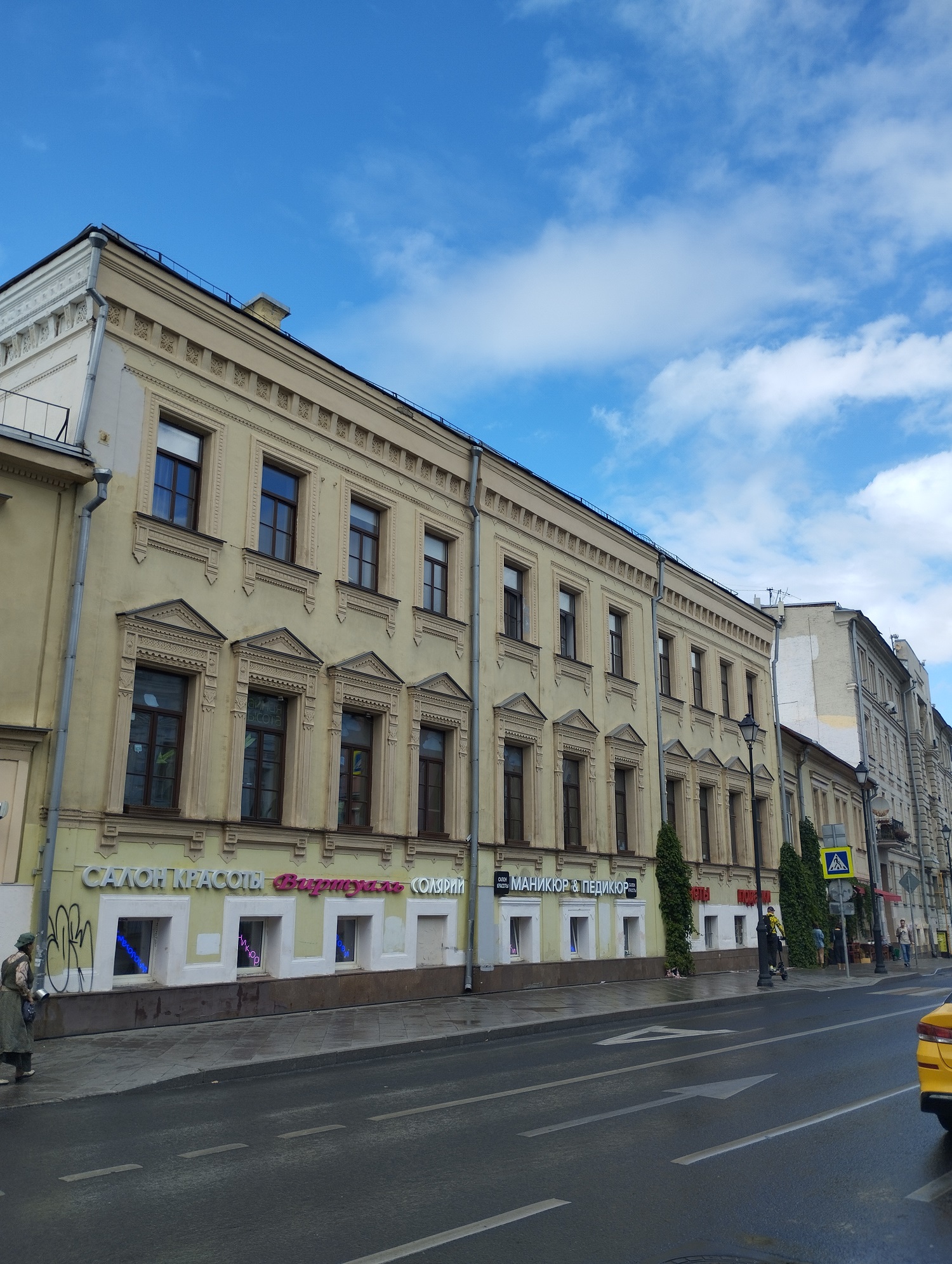Первые сведения об усадьбе на Покровке относятся еще к 1780 годам. Позже, в середине XIX века, она принадлежала А.Ф. Марку – представителю состоятельного клана «московских немцев» Вогау – Марков.
У Марка усадьбу в 1860-е годы приобрел Дмитрий Петрович Боткин (записана она была на его жену Софью Сергеевну). Купеческая семья чаеторговцев Боткиных была известна всей Москве. Сам Дмитрий Петрович еще с юных лет увлекся собирательством произведений искусства и со временем стал общепризнанных знатоком в этой области. «Ничего тусклого, второстепенного… Видно, что хозяин сам давно занимается нелегким делом толкового и любящего покупщика картин, что он каждую картину облюбовал, не действовал зря, не накидывался только на модный сюжет или на эксцентричность», - писал о нем писатель П. Д. Боборыкин. Первоначально боткинская коллекция, состоявшая в основном из произведений западноевропейских живописцев, располагалась в родительском доме в Петроверигском переулке. Но позже обширное собрание переехало на Покровку.
В 1867 году усадьба была перестроена в русском стиле по проекту архитектора А. С. Каминского. Любопытную деталь архитектурного замысла А. С. Каминского можно увидеть со стороны двора усадьбы. Здесь сохранились арки, первоначально являвшиеся частью не существующего сейчас перехода из одного здания в другое. Зрительно они «перетекают» в арки дома Апраксиных-Трубецких на противоположной стороне Покровки, образуя интересную арочную анфиладу. При доме в то время был коровник, курятник и обширные подвалы с провизией.
В двухэтажном дворовом корпусе Боткин устроил художественную галерею с тремя «картинными комнатами», осмотреть которую в определенные дни с разрешения хозяина мог каждый желающий. Здесь были полотна известных западноевропейских живописцев, в том числе, Ш. Ф. Добиньи, Ж. Б. К. Коро, К. Тройона, имелись работы и русских художников: А. А. Иванова, И. Н. Крамского, В. Д. Поленова и др. Среди посетителей галереи был Л. Н. Толстой, А. А. Фет.
После смерти Д. П. Боткина коллекция оказалась разрознена. Часть ее была вывезена во Францию, другая часть после революции пополнила собрание Музея изящных искусств на Волхонке.
В начале ХХ века владение принадлежало сыну Дмитрия Петровича Петру Боткину. В советские годы здесь были устроены коммунальные квартиры. В настоящее время – различные конторы и кафе.





















%20BEL_0521.jpg&w=1920&q=75)






